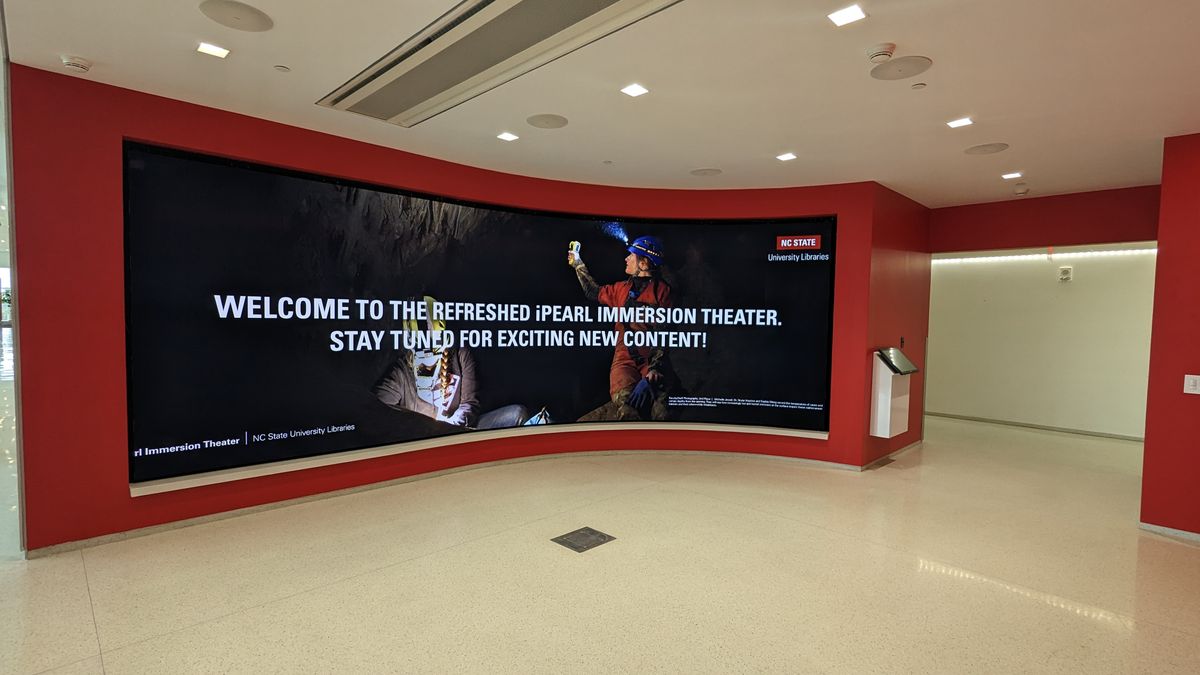(This article was provided by Ryan Hunter, lead AV professional for advanced technology, NCSU Libraries, via Sony.)
North Carolina State University’s James B. Hunt Jr. Library serves a big purpose for our students, but it’s also open to the public. When the library was built more than 10 years ago, multiple video walls were installed simultaneously, and they ran virtually nonstop 24/7. Over time, they required repairs and needed to be replaced. The parts and support we needed were no longer available, and we had to start planning to replace these walls in one year.
While attending InfoComm in 2019, I saw Sony’s Crystal LED (CLED) video wall in action and thought it looked incredible. It was a level beyond what everybody else was able to provide at the time and as far as I’m concerned, it still is. We weren’t able to use the CLED at first because it was only a rear serviceable product but I always kept it in the back of my mind. Once I found out a front serviceable version was available, I pitched it to our group. We considered various manufacturers and when it came down to image quality, Sony ended up being the general vote. We were also sold on the CLED because of its 4K resolution and the fact that it supports current 120 refresh rates and a high dynamic range (HDR). Its simplicity is another high point. Being able to expedite that repair time is another huge benefit because in the event of an issue our video wall will not be down for nearly as long as it used to be.
We’ve installed one CLED video wall, in the space known as the iPearl Immersion Theater. The iPearl Immersion Theater’s video wall is about 25 feet off the floor due to the school’s foot traffic and it serves students and the public. Its resolution is 4,000x1,620, and it’s approximately 20x8 feet. The video wall is also displayed on a curve to give viewers an immersive experience from many different angles. It works as a digital exhibit space for student, faculty and community projects, so viewers will see student and faculty work, community project results, and special events such as a “Martin Luther King Experience.” In addition to the amazing image quality, individuals can also experience a virtual reality environment where they’ll watch a speech and the image quality paired with sound effects can make them feel like they’re attending the speech in person.
Additionally, due to its flexible support of digital content creation frameworks and game engines, such as Unity and Unreal, the Crystal LED also opens the door for students to come in and build their projects off of those templates, which empowers their creativity.
[On Visualization Technologies: Sony]
Sony was very patient and great to work with when it came to defining the parameters of what could fit, what would work, and what the max curve was for this wall. Working with the curve shape required careful consideration, as Sony would only recommend certain degrees to make it work flawlessly.
To date, the reception to the CLED has been positive and staff and visitors are impressed with the quality and how immersive the images are. As of right now, we’ve only installed one CLED video wall but we plan on installing a second one called the “Art Wall.” This video wall won’t be used for immersive content or instructional purposes, but it will be a great way to display digital signage and student artwork.












